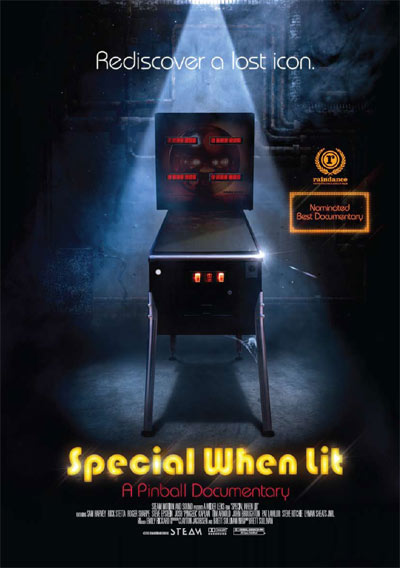
Featured Blog | This community-written post highlights the best of what the game industry has to offer. Read more like it on the Game Developer Blogs or learn how to Submit Your Own Blog Post
We Are the Children of Pinball
Last weekend I visited the Pinball Expo in Chicago. I learned a lot about game design, there, and I'd like to share some of that with you.

On Saturday, I visited the the Pinball Expo, which took place in Chicago(ish). I had been inspired to seek out the event by the documentary ‘Special When Lit,’ which tells the history of pinball, as well as the personal stories of several contemporary pinball enthusiasts. I watched that film months ago, so the anticipation had been building. I was not disappointed.
Special When Lit
Hundreds of pinball machines were on display, (and playable!) from the quaint antiques to the flashy modern machines from Stern Pinball, who hosted the event, and were entitled to show off a bit. They were showing off their new X-Men machine, which I had already played at Emporium Arcade Bar, so instead of standing in line, I got to explore.
One of the first machines I saw was Gottlieb’s Sinbad. Sinbad is a classic, and many people love it, but it reminds me of the archetypal bad design philosophy “if one widget is good, two widgets will be twice as good!” Yes, Sinbad adds an extra set of two paddles right next to the original set, making a grand total of four paddles! It’s at this point that I’ll ask you to please refrain from Gillette razor jokes.
On paper, adding two extra paddles sounds like a cool idea. The extra power given to the player is compensated by the lack of a wall behind the second paddle, so the ball can actually pass between the paddles and go down the drain. It sounds like a balanced design, but in practice it feels broken to me. The lack of a wall next to the bottom paddles makes it nearly impossible to trap the ball in preparation for a skillshot. The ball can also get stuck between the adjacent paddles, sometimes forcing the player to knowingly send their ball down the drain in order for the game to progress.
Contrast that with my favorite machine of the night, Black Hole, also from Gottlieb, and made just two years later. Black Hole also has four paddles. The extra left paddle is offset significantly, serving as an extra boost about a third of the way up the playfield. The extra right paddle has a wall behind it, and a stopper just below it, preventing the ball from getting stuck, and allowing the player to trap the ball in preparation for the skill shot.
Black Hole
And what a rewarding skillshot it is. If the player makes the ball into a special area marked “gravity tunnel,” (which it literally is) they are treated to a second, smaller pinball machine nested under the first. There’s also a twist. The lower pinball machine is inverted! Right is still right, and left is still left, but the paddles are now at the far end of the playfield, meaning up is now down.
I can’t say enough about how fun I found this machine to be, and how much I learned from the design. I love the two game design ideas it melds so perfectly. The first idea: nest a game within another game of a similar type. This is something videogames have done and will continue to do. The underground parts of Mario come to mind. Jason Rohrer gave the concept a game of it’s own with Inside a Star-Filled Sky. What made this part of Black Hole extra exciting is that the nested game can come as a surprise (as it did to me), adding a flavor of delight and discovery to the already meaty idea.
The second idea: reverse the game somehow, for a limited period of time, then go back. I’ve seen this done in games as well. The minimalistic infinite runner DOT5URBO is based on a simple spike-avoidance mechanic, but a powerup reverses the game, asking you to hit as many spikes as you can until the time runs out. Putting those two ideas together: a nested reverse-game. A landmark of clever game design I will not soon forget.
Towards the end of the night, after failing to locate my personal favorite pinball machine of all time,Jurassic Park, I got a real treat - a pre-paddle pinball machine. In place of paddles, it had elastics. The only player control came from bumping the machine with your hip or shaking it side to side (no tilt sensor either). What I found strange about this machine was not how much it changed the game, but how little. I imagined a straight line from this unsophisticated wooden box to the high-tech X-Men machine on the other end of the hall. Another line diverged from the first, starting with a pong cabinet and ending at the current generation of consoles. So little has changed.
Read more about:
Featured BlogsAbout the Author(s)
You May Also Like







.jpeg?width=700&auto=webp&quality=80&disable=upscale)








